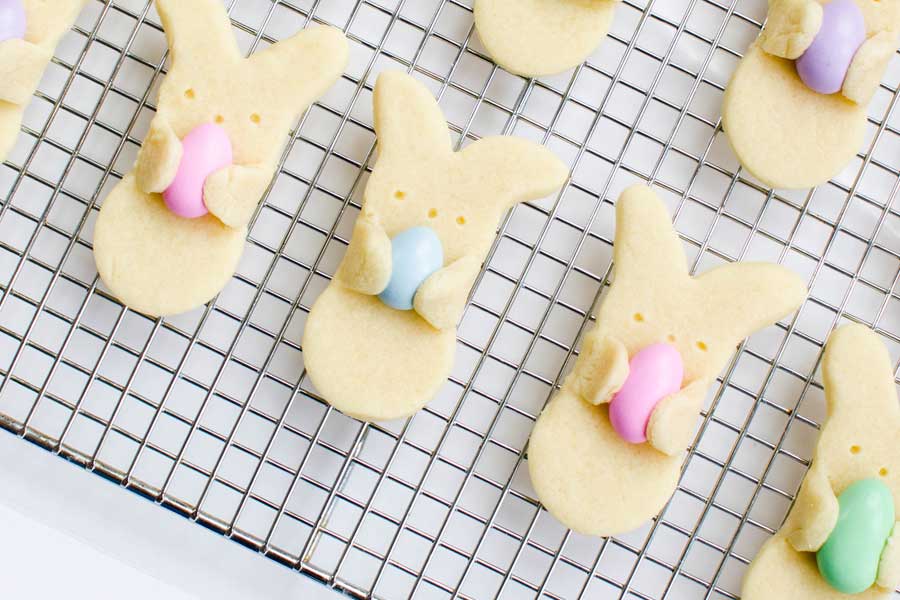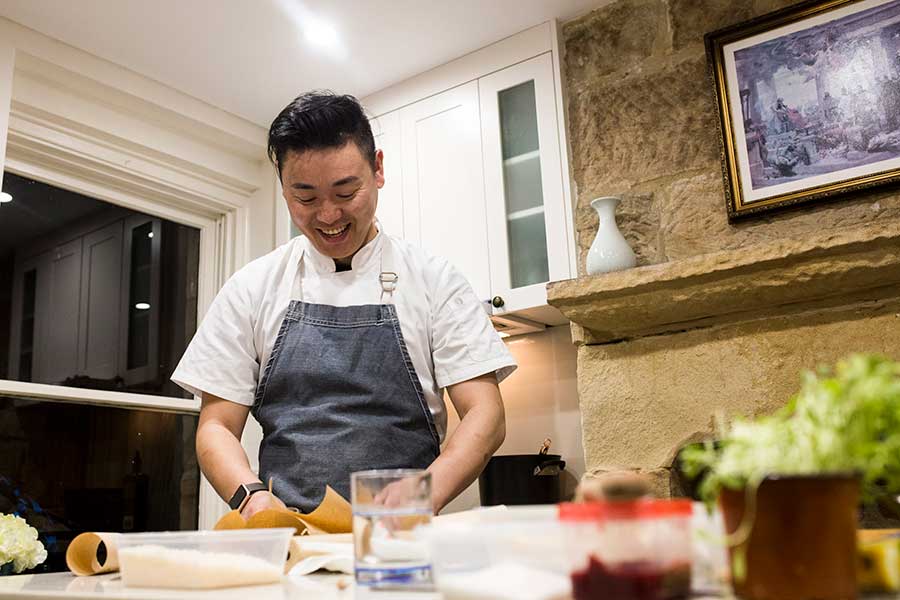Everybody loves Easter – whether it’s the chocolate bunnies or egg hunts – but did you ever stop to think where these traditions came from? How did a celebration of Christ’s resurrection come to be celebrated with rabbits and chocolate eggs? Well, we have these traditions because Easter was originally a pagan festival – much like Christmas. As Christianity gained popularity, a lot of pagan customs and rituals were integrated into Christian festivals like Easter. Let’s take a closer look at the pagan origins of Easter and the different foods eaten on Easter around the world today.
The pagan origins of Easter
While Christmas was a celebration of the winter solstice, Easter was a celebration of the spring equinox for the pagans. Pagans lived their lives in strong accordance with nature’s rhythms and patterns, and solstices and equinoxes were considered to be sacred times. A solstice marks the longest or shortest day of the year, while an equinox symbolises the day when there is balance between daylight and darkness. This shows the end of one season and the beginning of another. In the northern hemisphere, Easter falls on the spring equinox, when winter is coming to an end and nature is experiencing a rebirth and renewal. This is naturally a cause for festivities and celebrations, as the darkness comes to an end and plants and leaves start to regrow after the cold winter.
How Easter was adopted into Christianity
Around mid-300AD, Christianity was increasing in popularity in Rome, then the centre of the world. In 312, the Emperor Constantine converted to Christianity and put an end to the ongoing persecution of Christians. However, he knew that just because he had converted, it didn’t mean that pagans would stop following their rituals and traditions. So he slowly started to adopt existing pagan rituals into Christian festivities. In 325 AD, the church council – known as the Council of Nicaea – first decided that Easter’s celebration should fall on the Sunday after the first full moon of the spring equinox. And thus Easter Sunday was born, and symbols associated with nature’s rebirth and renewal came to be associated with the rebirth or resurrection of Christ.
If you are interested in Pagan traditions, you might also want to check out These 6 Christmas Traditions Are Actually Pagan Customs.
Where does Easter get its name from?
In most of Europe, the Easter celebration gets its name from the Jewish festival of Passover, which occurs at a similar time to the spring equinox. So in Greece, Easter is called Pascha, in Italy it is Pasqua, in France it is Paques, and in Denmark it is Paaske. But in Germany and English-speaking countries like England, Easter took its name from the pagan goddess Eostre – the goddess of spring and fertility.
Easter’s symbolism and foods
Now that we’ve come to understand Easter’s original nature as a celebration of spring, the symbolism starts to slowly make sense. Let’s take a closer look at where Easter’s symbolism came from.
Where did Easter eggs come from?
Eggs are a symbol of new life and rebirth, just as nature returns to life after the cold of winter or Jesus is resurrected after the crucifixion. Decorating and eating eggs on Easter first became a custom during the Middle Ages, when people would decorate and eat hard boiled eggs following Easter Sunday mass after fasting throughout Lent. This ritual is still popular in many Eastern European countries, where you’ll find families hand painting and eating actual (non-chocolate) eggs on Easter.
Why is Easter associated with a rabbit?
Now the eggs may make sense, but how did a rabbit come into all of this? This symbolism can be especially strange when you consider the fact that rabbits don’t even lay eggs! But it all ties back to the concept of fertility, rebirth, and renewal as celebrated by the pagans. The sacred symbol of the goddess Eostre was a hare, and rabbits have long been considered a symbol of fertility due to their ability to reproduce quickly and in large numbers.
But the first official mention of rabbits or hares in association with Easter was only made in 1722, in a folklore book written by Georg Franck von Franckenau, a German writer. One of the stories recounted in this book mentions an Easter hare that hides coloured eggs for children to find – the first written mention of an Easter egg hunt. Since the book was a collection of folklore, it’s reasonable to suggest that Easter egg hunts were already a custom at the time.

In the 19th century, the greeting card industry experienced a boom. This was because more people were able to send and receive letters and parcels by post. As a result, card companies – like Hallmark – started to really market particular holidays with fun and festive greeting cards. Easter was one of them. Cards started to appear with cute illustrations of rabbits and Easter eggs, popularising the connection between Easter, bunny rabbits, and colourful eggs.
Why do we eat chocolate on Easter?
So when did we stop eating hard-boiled eggs and start eating chocolate eggs and bunnies instead? Around the same time that greeting cards were booming. In Germany, it was popular to eat sweet edible Easter bunnies – though these were made from a sugared pastry. At the time, chocolate was consumed as a beverage rather than a solid sweet, and was still rather bitter as cocoa is known to be. However Cadbury, then still a new company, was experimenting with solid forms of chocolate. They jumped on the Easter bandwagon and started marketing chocolate Easter eggs. We never stopped eating them, and today chocolate Easter eggs and bunnies are one of Easter’s biggest treats.
Why do we eat hot cross buns on Easter?
OK, so what about the infamous hot cross buns? Believe it or not, hot cross buns are another pagan tradition. These were taken from the Saxons, who would bake fresh bread in honour of the goddess Eostre. The fresh buns would be marked with a cross. At the time, the cross represented the four quarters of the moon, four seasons, and wheel of life. It’s pretty easy to see why hot cross buns were adopted to Christian festivities, where the symbol of a cross has a strong connection to the crucifixion of Christ.
Traditional Easter foods from around the world
Not everyone spends Easter gorging on chocolate bunnies and going on Easter egg hunts in the garden. In lieu of being able to travel this year, why not take some inspiration from the various Easter foods from around the world? Here are a few traditional feasts, desserts, and snacks that symbolise Easter around the world… Try them yourself, or hire a private chef to create the masterpiece for you!
The 15,000 egg omelette from France
It sounds extravagant, but this mega omelette is created with the intention of distributing it amongst the many villages and towns surrounding Bessières in France. About forty cooks come together to create this giant omelette! The result is handed out to surrounding villagers and served with a slice of bread. That may be a few eggs too many for you this Easter! But why not join the spirit of generosity and cook up a giant French omelette to distribute to the poor and needy? At the very least, you can share a mega-omelette with your family members and enjoy the spirit of togetherness.
Codfish cakes from Bermuda
Don’t read this the wrong way, codfish cakes are not a dessert but a savoury dish much like the well-known fried fish cakes. You can make these yourself or go all out with a Bermuda-inspired feast led by your private chef. What else do they eat in Bermuda on Easter? Why, the better known and loved hot cross buns! Start with a delicious codfish cake, flavoured with thyme and parsley, and end with a moist, warm hot cross bun. If you want to adopt some other Bermuda traditions this Easter, go out to the nearest beach and fly a kite with your loved ones.
Dove-shaped Easter bread from Italy
Colomba di Pasqua is a traditional Italian bread or cake, recognised as being the Easter version of the infamous Christmas dessert panettone. The dough is similar to panettone, but that’s where the similarities end. Colomba di Pasqua is traditionally shaped like a dove, contains candied fruit peels, and is topped with lots of almonds and pearl sugar. Another popular Easter dish in Italy is brodetto pasquale, which is similar to a frittata that’s made using early spring vegetables. Again, eggs are a strong symbol here as well as the freshness of spring veggies and the first renewal of the plants. Try your hand at making these recipes or enjoy them as part of an around the world Italian Easter feast.
Lamb, eggs, and braided bread from Greece
Greek Orthodox Easter falls on a different date to Catholic Easter, but there’s still plenty of feasting to be enjoyed after Easter Sunday. On a Greek Easter table you’ll find delicious roasted lamb, red-dyed hard boiled eggs, and tsoureki. This is a type of braided bread that’s flavoured with orange zest and spices. The red-dyed eggs will typically be served on the bread before baking. As a snack, there’ll be plenty of cheesy filo pastries of both the sweet and savoury varieties. Like we said, Easter comes with quite the feast in Greece – so you can either spend the lead-up being busy in the kitchen or let a private chef do all the hard work for you!

Get in touch with our team now to start planning your dream Easter feast – at home, at church, or wherever you like.